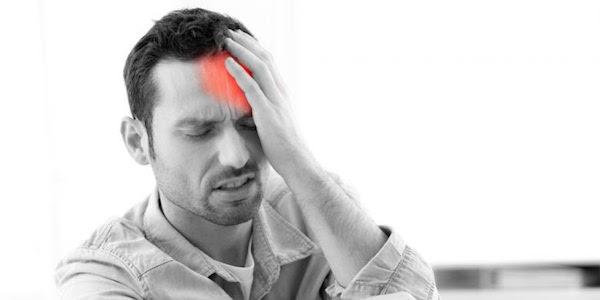 DD HEALTH WATCH: On any given day in Ireland more than 13,000 people are suffering from migraine – the majority forming part of the workforce.
DD HEALTH WATCH: On any given day in Ireland more than 13,000 people are suffering from migraine – the majority forming part of the workforce.
Despite the fact that migraine is the most common neurological condition in the developed world, more prevalent than diabetes, epilepsy and asthma combined, the cause is still not known.
Hollywood stars Hugh Jackman, Ben Affleck and Friends’ Lisa Kudrow are among those who suffer from migraine as well as tennis champion Serena Williams.
Migraine is the 6th ranking cause of all disease associated disability worldwide, costing the Irish economy a staggering €252 million a year due to a combination of workdays lost and a reduction in productivity – totalling almost four days annually.
This shows that it’s so much more than a simple headache.
What is known, however, is that most sufferers are genetically predisposed to the condition, and it’s more common in women, with 18% of them suffering with migraines, compared to 8% of men.
As one of the symptoms is a throbbing pain in the head, migraine is often dismissed as a headache.
The most common symptoms of a migraine attack include a throbbing headache, sensitivity to light and noise, nausea, vomiting.
In some people, changes in the cortex area of the brain cause sight abnormalities, such as dark or coloured spots, sparkles or stars, and zigzag lines.
Numbness or tingling, weakness, and dizziness or vertigo can also occur.
Speech and hearing may be disturbed, and sufferers have reported memory changes, feelings of fear and confusion, and more rarely, partial paralysis or fainting.
Such neurological symptoms are called the ‘aura’ of migraine.
In adults, they usually happen before the headache itself, but in children, they may occur at the same time.
According to the Migraine Association of Ireland there are 500,000 sufferers in Ireland.
Migraine With Aura symptoms – Neurological disturbances that occur before the headache begins, usually lasting about 20-60 minutes:
Blind spots
Flashing lights
Zig-zag patterns
Pins and needles on one side usually starting in the fingers/ arm, sometimes spreading up into the face
Slurring of speech
Muscular weakness
Loss of co-ordination
Confusion
The other symptoms of migraine will usually follow the migraine aura. These are:
Intense throbbing headache, usually on one side of the head, worsened by movement and lasting from 4-72 hours
Nausea, sometimes vomiting
Sensitivity to light
Sensitivity to noise
Sensitivity to smells
Stiffness of the neck and shoulders
Blurred vision
Migraine Without Aura
The majority of migraine sufferers have Migraine without Aura. The most common symptoms of Migraine without Aura are:
Intense throbbing headache, usually on one side of the head, worsened by movement and lasting from 4-72 hours.
Nausea, sometimes vomiting
Sensitivity to light
Sensitivity to noise
Sensitivity to smells
Stiffness of the neck and shoulders.
Blurred vision
Treatment
Preventative medication that may be prescribed by a doctor includes anticonvulsants, antidepressants, antihistamines, beta-blockers, and anti-inflammatory drugs, which have all been shown to help prevent migraine attacks.
People with severe migraines may be treated with migraine-specific drugs called triptans.
Strong painkillers, anti-nausea drugs and even sedatives may also be prescribed, but the medication needed very much depends on a patient’s specific symptoms.
In addition, Botox injections, which can help relax muscles, may be used to help relieve chronic migraine.
Over the last ten to fifteen years, there has been a dramatic increase in the number of people using complementary techniques to treat migraine as the concept of integrated medicine has become more acceptable.
Many Irish migraine sufferers have gained at least some relief through therapies such as acupuncture, biofeedback, reflexology, meditation, mindfulness, CBT, yoga and a plethora of others.
The conventional medical profession has viewed this growth with some scepticism.
However, Migraine Association of Ireland believes that if the individual can get some benefits from using complementary practices, then their use is to be supported for that individual.
KNOW YOUR TRIGGERS
They can be lifestyle-related, environmental, hormonal or dietary for example.
For many women, menstruation can bring on a migraine attack.
Around 50% to 60% of women who experience migraine will report a worsening of migraine attacks around the hormonal cycle.
Environmental factors can also have an effect. Bright lights, harsh sunlight, stuffy or smoky atmospheres and even very humid days can trigger an attack. Fluorescent lighting or artificial lighting, for example the kind used in shopping centres, can also be a trigger.
Loud noise such as loud music, the noise of heavy construction work or simply unpleasant sounds can also cause problems.
Weekend migraine: a long, busy week followed by some weekend relaxation can bring about a migraine attack.
Diet: common food triggers include food containing monosodium glutamate, (MSG), which can be found in processed foods such as pizzas or curries. Alcohol, particularly red wine, is a common trigger.
EDUCATE YOURSELF
Understanding migraine and learning how to manage the condition is crucial because there is no cure for it.
Keep a headache diary
This is a crucial part of managing migraine. It helps track your triggers and recognise the frequency and severity of attacks, record the treatments you use and how effective they are.
Exercise
Exercise helps you relax and has a therapeutic value through the release of endorphins which can act as a defence against migraine and help reduce the number of migraine attacks. Just don’t over do it as excess exercise can also be a trigger for some people.
For more information go to the website of the Migraine Association of Ireland.
www.migraine.ie
Tags:







